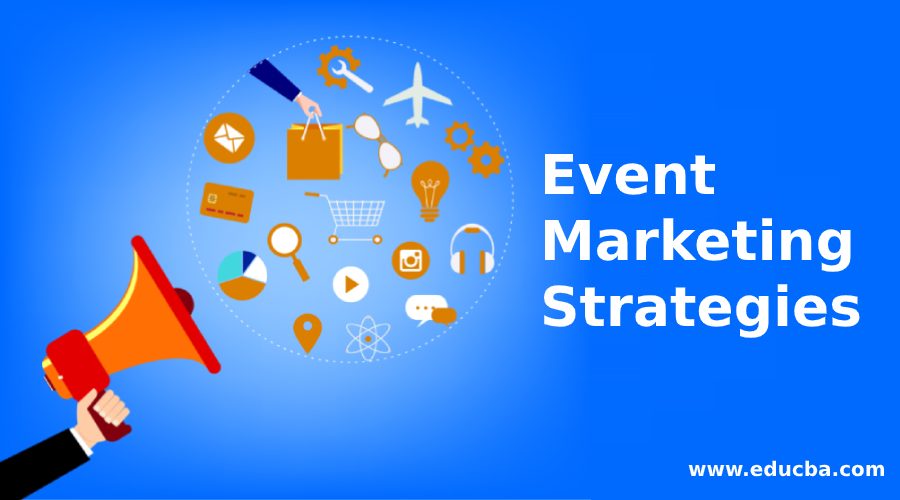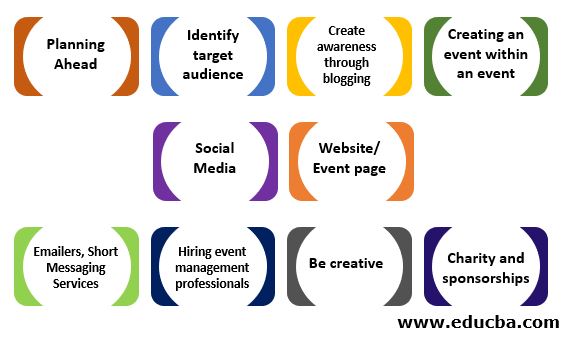
Introduction to Event Marketing Strategies
In a competitive market, companies need to keep in touch with consumers to get feedback, develop new businesses, introduce new ideas, concepts, and brands, and keep pace with the rest of the industry. The explosion of mass media, malls, large stadiums, and business convention centers having open and closed auditoriums have created new opportunities for the corporate world to engage with consumers – through events and stage shows that can also attract coverage in newspapers, radio, and television. This article will be about event marketing strategies.
What are event Marketing Strategies?
Event marketing strategies refer to activities companies use to engage with the customer in an open platform, such as stage shows, trade fairs, and sporting events. Some popular methods to attain brand value and mindshare of consumers are fashion, music, concerts, marathons, funding charity shows, contests, parties, health awareness events, and fun events. Huge hoardings announcing such events in megacities are common.
It is a valuable complement to many companies’ traditional brand-building and market promotion activities.
According to a study by the Event Marketing Career Institute four years ago, the success rate of events is very high, leading to immediate sales conversion rather than just creating awareness of products and brands. The study said 58% of the participants purchased a product immediately after the event, and 86% became regular customers.
How do Event Marketing strategies differ from Conventional Marketing?
In mass media, promotional efforts involve huge budgets intended to address a large audience covering a geographical area of a state or province, a city or town, or even the whole of the country and across countries. It applies to television, newspapers, magazines, radio, and even web-based media, including social media.
In contrast, event marketing strategies target a select audience with unique interests, age groups, or staying in a particular place. Hence the reach of event marketing strategies is limited to a specific location, class of consumers or age, and social strata. However, available research indicates that event marketing strategies can provide a positive return on investment (ROI) better than their counterparts in the mass media.
Experts point out that the key to a successful event marketing career campaign is to identify the target audience correctly and create an experience, often supported by event WiFi, that remains in the participant’s memories. If the target identified is right, consisting of current and prospective buyers, it could help create favorable impressions about the company and develop long-lasting relationships.
One of the most popular events is the McDonald’s Monopoly game which began in 1987 in the UK, Canada, Australia, the US, and several other countries. The sweepstakes game aimed to bring more customers to its restaurants by giving prizes to participants. Although there was fraud administering the game, it continues to be one of the most followed events in the world.
Event management strategies
Following are some event management strategies:

1. Planning Ahead
Unlike a mass media campaign, where an ad agency or a production house based on the brief provided by the company does a good chunk of the work, event marketing strategies require careful planning, sometimes months ahead of the program.
Budgets must be estimated and approved by the finance department, and possible avenues for income generation, e.g., sponsorship from television rights and the contribution from philanthropic agencies, must also be assessed. The editorial and promotional material must be prepared and circulated to potential participants. If the company has a customer base, information sharing can occur by email by sending printed brochures with admission tickets and requesting them to promote them among friends.
2. Identify target audience
The most important part of planning is identifying the target audience. A textile retailer catering mainly to women should have events focused on women of a particular age group. In South India, a popular show hosted by the Seematti Textile group features. Bridal wear and participants are selected from homemakers and professional women from all walks of life. The event hires the best talent for dancers, choreographers, and photographers nationwide, including top event photographer London to ensure high-quality, captivating photos that enhance the event’s appeal and reach. Identifying the target audience is essential for planning the program’s content, free offers, drawing lots, and deciding prizes.
3. Create awareness through blogging
If the company has a blog section on its website, it can effectively communicate news about the event, its purpose, goals, objectives, and educational aspects. Since the content is original and informative, the chances of them getting ahead in search engine rankings are higher. Such blog posts have the advantage of being boosted through social media such as LinkedIn, Facebook, and Twitter.
The content that works best in event promotion is the purpose, interviews with crucial delegates or experts, the venue, news, photographs, details about the turnout, the outcome, and several important information. According to Event Marketing Strategies Maven Michelle Bergstein, it works well if the company has an editorial calendar to work with.
Likewise, one can request experts in the industry to write articles or opinion pieces that the readers will value.
If the event is an ongoing annual affair, one can use client testimonials to create a good impression among potential clients. However, there should not be an effort to build hype that may backfire.
4. Creating an event within an event
An event can have one theme and sub-themes that can engage customers directly, teach them about a product, and interact in a quality way. Ian Greenberg, senior vice president of Show Media, an advertising agency in New York City, talks about the Ray-Ban truth-or-dare-themed campaign in a vehicle. Passengers were asked truth-or-dare-themed campaign and giving away free sunglasses. The attraction of such events is the opportunity to experience new things and which they share with their friends. One can invite Speakers, sponsors, partners, influencers, and press members for a night out before the event. It can build rapport and bonding, leading to better relationships and support for the event.
5. Social Media
Social media is famous for promoting events, stage shows, and roadshows. Facebook, Twitter, Linkedin, and Google Plus can effectively create essential daily announcements regarding events with good graphics, photographs, and infographics. The number of shares likes, and comments would depend on the postings’ quality and relevance to the event and the consumer. Facebook can create an event weeks before the event and get responses from participants as likely to go, go, or not go. Although this cannot rely on a hundred percent, it can assess the importance of the event in the consumer’s mind.
Facebook, Twitter, and LinkedIn can also boost blog posts and articles. It pays to use paid promotional options in social media rather than the free services as it will enhance the geographical reach, increase likes and shares, and lead to more conversions.
According to Issa Sawabini, partner of Fuse, a youth marketing agency based in Vermont, Twitter is ideal for young adults who aren’t too young. They are becoming used to making constant updates from the on-site/booth; therefore, brands are also getting good t creating on-site experiences over Twitter.
Rachel Stephan, President of Sensor/Event Marketing Strategies, clients want to know that the right people see their event in the right places to ensure maximum visibility and registration. Jay Baer, a social media expert, opines that if you want attendees and followers to share your social posts, they must be interesting enough to warrant it. More than just sharing content is required; engaging followers and content should be interesting to share and discuss.
6. Website/Event page
Although social media has become a more popular medium to share and post content for most people, the backbone of any corporate promotional activity is a good website.
The event posts on websites should indicate the topic, time, place, and profile of those who should attend. It could also describe the benefits of attending the event. It should be brief and concise. Third-party endorsements help in attracting the audience.
The event description should have speaker pictures and a bio, as great pictures draw huge crowds, the event’s logo, videos related to the event, and, most importantly, the register button. The event registration thank you Page, should allow readers to share the event on social media. They should receive an email on registration, and this opportunity can suggest they follow the company on Twitter.
7. Emailers, Short Messaging Services
Email campaigns can start early, and titles and headers should receive care. Subject lines that inspire awe and anger or create anxiety lead to higher open rates, while subject lines with lukewarm emotional content have less probability of being opened. Individuals open Emails better at the weekends compared to weekdays. To get better click-through rates, one should send emailers at the weekend. Short Messaging Services (SMS) can remind people who have registered or are potential visitors to the event a few days before and also on the day of the event, especially if it is in the evening. Considering the word limitations, care should be taken in writing and editing it, as poorly worded content can lead to no click-through.
8. Hiring event management professionals
Suppose the core activity of a company is unfocused on events. In that case, it makes sense to hire professional event managers to do the show as the company’s core team need not take time off from their regular jobs to do the event management. Preparation for the event and its conduct could take several man-hours and existing employees’ skills, while the company’s core activity may be affected. Therefore, it makes sense to outsource the job to an event staffing agency that will take care of the choreography, backdrops, arranging invitations, seating, and program content, including music.
9. Be creative
An event should create a lasting impression on the audience. That is why Sony’s campaign of 2005, when 250,000 bouncy balls were on the streets of San Francisco to promote the color display of the new Bravia LCD television, became such a hit. Flash mobs in malls and public places can instantly attract crowds and, if used creatively, can bring good results. Recently, in India’s capital Delhi, a group of women committed to promoting the Sari appeared suddenly in the atrium of a mall in Delhi and performed western dance forms in Sari, proving that the traditional wear is no hindrance for performing daily tasks and one must not substitute it with western wear on that count alone.
Creativity is an essential aspect of the event promotion, and the more talented the people behind the show, the better its impact will be. Sometimes, the presence of film stars can add value to an event, although it could entail higher costs. However, the choice of the star, its relevance to the industry, and its charisma are essential for the artiste to be a real crowd-puller for the show.
10. Charity and sponsorships
Companies that give back something to society are responsible corporate entities, creating brand value among the public. Charity shows can attract an audience for music, dance, drama, stage shows, and various other programs, creating goodwill.
Conclusion
Event marketing strategies are not a substitute for traditional market promotion activities but a complement to them. But there are industry verticals where event marketing strategies could be a good payoff. Fashion, IT, consumer goods, electronics, jewelry, watches, bridal wear, garments, sportswear and equipment, and health and fitness products are all apt categories for event promotional activity. Since the events tend to be localized, good support regarding hoardings and banners in strategic locations in the city or town can generate more inquiries and pull crowds on the event day. FM Radio can also create awareness on the day of the event and the previous day.
Recommended Articles
Here are some articles that will help you to get more detail about the event marketing strategies, so just go through the link.


